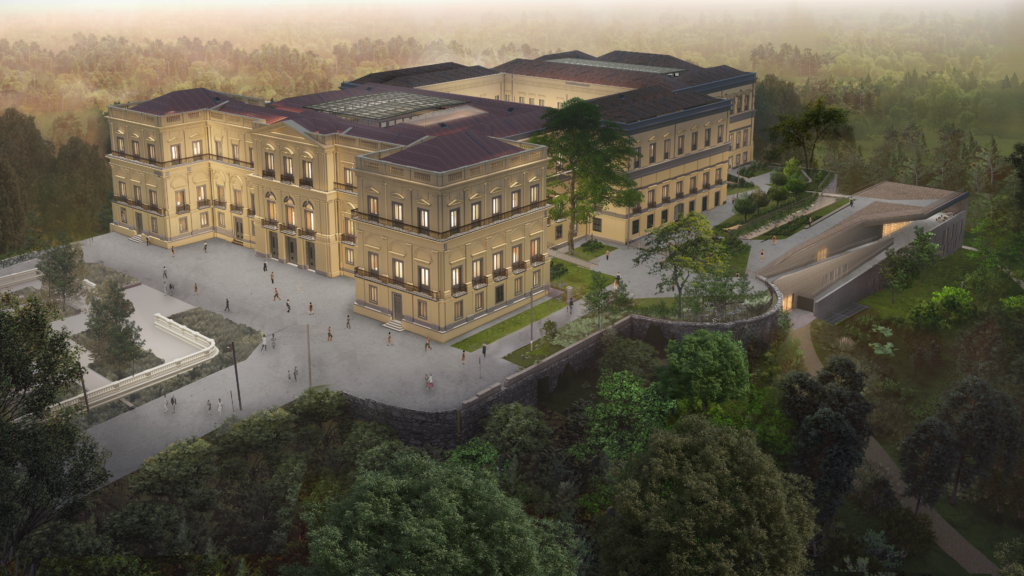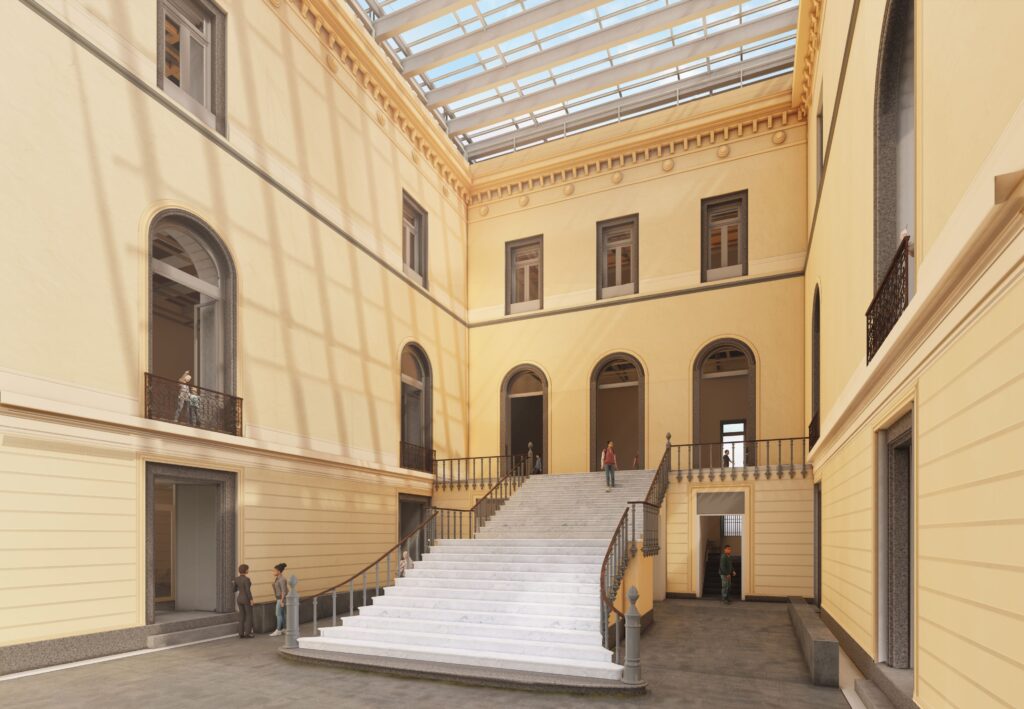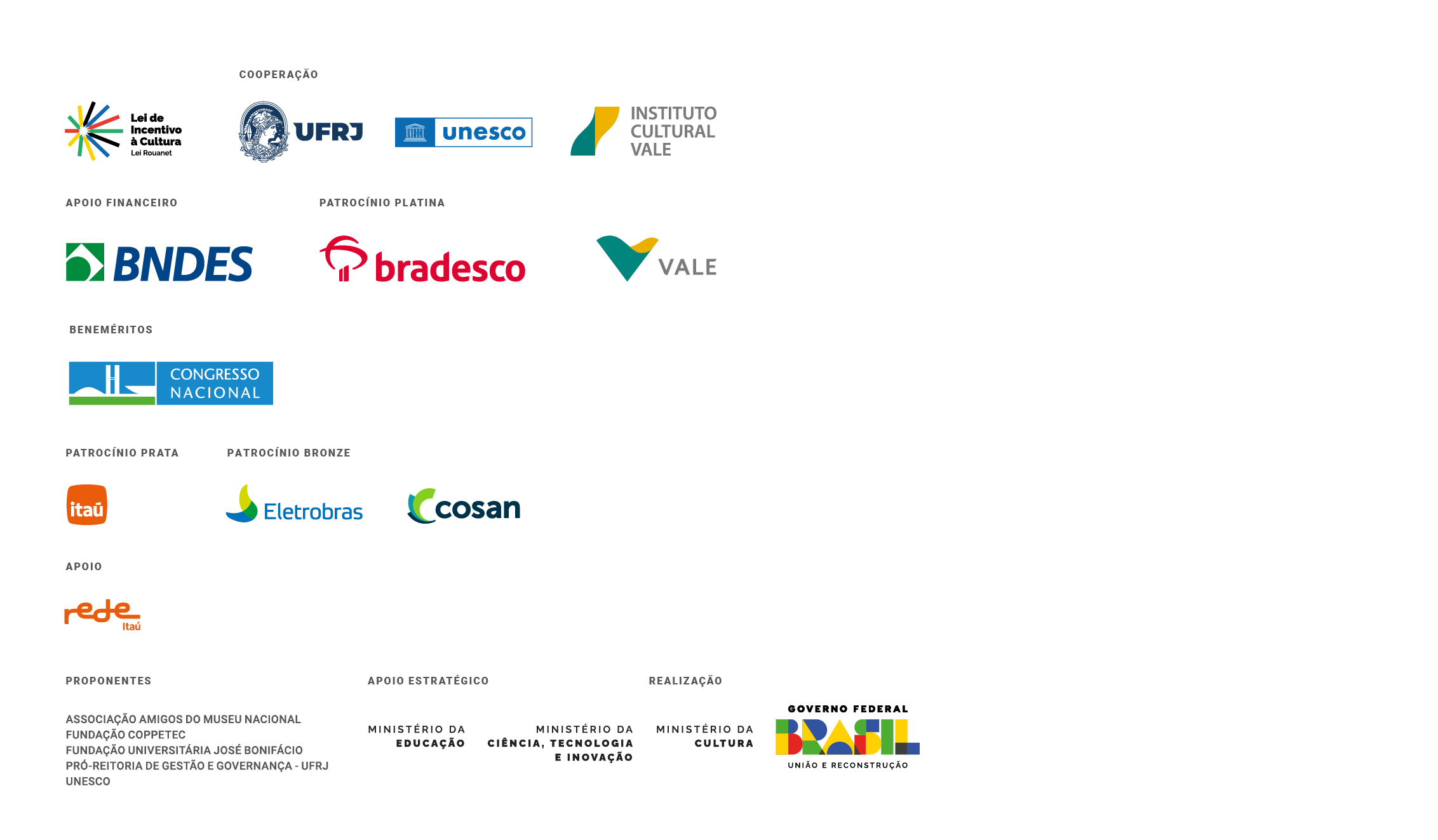Museu Nacional restoration receives new favorable view from Iphan
The Rio de Janeiro Instituto do Patrimônio Histórico e Artístico Nacional (Iphan-RJ) approved last Thursday (June 29th) the Restoration and Architecture preliminary draft project of the Palace São Cristóvão, headquarters of the Museu Nacional/UFRJ. The report registers the agreement between the project’s general concept and the institution’s willingness to keep collaborating with the development of the executive project interventions on the Palace and its surrounding.

The preliminary draft involved a variety of actors with multidisciplinary expertise and it presents a remarkable commitment to integrating, even more, the Museum into the Quinta da Boa Vista gardens, guaranteeing every premise of accessibility and sustainability; and also seeking to preserve the Palace’s artistic and historical decorative elements.

One of the suggested interventions, which IPHAN has already approved, is the installation of a transparent coverage on the monumental stair patio, securing better protection and ensuring natural light to enter into the Palace historical area. All of the Paço de São Cristóvão will be dedicated to exhibitions and education activities, while its annex building, Alípio de Miranda Ribeiro, will be remodeled and receive technical offices and a multi-use auditorium.
The draft project sent to IPHAN in August 2022 was developed by the consortium H+F Arquitetos e Atelier de Arquitetura, hired by the Project Museu Nacional Vive (cooperation between UFRJ, UNESCO, and Instituto Cultural Vale) that has the financial support from BNDES and silver sponsorship from Bradesco and Vale.
Last February, IPHAN’s president, Leandro Grass, visited the Palace restoration work. Since then, federal agents have joined the Project’s Institutional Committee and a work group to monitor and contribute to the architecture and restoration ongoing projects.
The recent view from IPHAN offers recommendations to different major fronts and highlights, particularly, the importance of restoring the decorative elements that survived after the fire, revealing the marks left by the fire at the old auditorium, and adding the archeological finds into the architecture, engineering, museography and visual communication projects. The Palace archeological monitoring has begun in 2021 and has already brought to light relevant artifacts and architectural structures. Among them, are parts of an old chapel structure, which was found in good conservation condition, floors remaining, and pavements that used to connect the Palace’s main patio to the Princesses garden. An audiovisual minidocumentary from the Project Museu Nacional Vive showing the experts’ work is available here
According to Museum reconstruction general schedule, the executive project and architecture and restoration detailing will be concluded by the end of the year, adding up the technical recommendations from IPHAN





